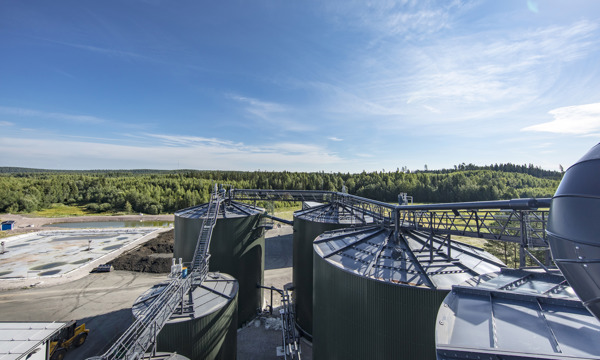Gas glossary – Get to know the terms
In this glossary, we introduce key terms related to natural gas, biogas, and their synthetic counterparts. Understanding these terms will help you navigate Gasum's gas-related products and services.
Natural Gas
Natural gas is almost pure methane, odorless, tasteless, and non-toxic. It does not contain sulfur, fine particulate matter, or heavy metals. Natural gas is the cleanest of the fossil fuels in terms of greenhouse gas and other flue gas emissions in energy production.
Biogas
Biogas, also known as biomethane, has a composition equal to natural gas but is a 100% renewable energy source. It is produced through the anaerobic processing of organic waste.
Find more information about biogas and biogas emissions.

How is biogas produced?
Biogas is produced through the processing of various types of organic waste. It is a renewable and environmentally friendly fuel made from 100% local feedstocks that is suitable for a diversity of uses including transport fuel and industrial uses.
e-Methane
Methane can be produced synthetically in the Power-to-Gas process. First, renewable energy and water are used to make synthetic hydrogen. The hydrogen can then be further processed into synthetic methane by adding biogenic carbon. E-methane produced this way is fully renewable.
In this page we have collected more information about e-methane.

Making renewable methane from green hydrogen makes sense – here’s why
Much of the production potential of biogas is still untapped, but an even greater potential lies in renewable synthetic methane, or e-methane, produced from green hydrogen. Unlike hydrogen, e-methane is easy to store and transport.
LNG (Liquefied Natural Gas)
Natural gas and biogas can be converted from gaseous to liquefied form by cooling the gas to -162°C. In the liquid state, the gas takes only 1/600 of the volume compared to the gaseous state. A benefit of liquefaction is that the gas can be stored, transported, and used conveniently and cost-effectively outside the gas pipeline network.
LBG (Liquefied Biogas)
Also referred to as Bio-LNG, LBG is made through the same cooling process as LNG. LNG and LBG are interchangeable with each other, as they both consist mainly of methane. This means that the two gases can be mixed and work in the same engines.
e-LNG (Liquefied e-Methane)
E-LNG is made through the same cooling process as LNG and LBG. E-LNG is also fully interchangeable with LNG and LBG and can be directly used by trucks and ships currently running on LNG at any ratio. There is no need for any additional investments in new equipment or modifications.
Understanding these terms will give you a clearer picture of the different gases and their uses. To learn more about how Gasum can meet your energy requirements, please explore our website or reach out to our sales team.



